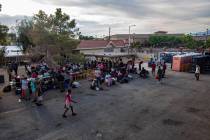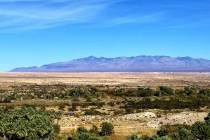Reactor safety and the Japanese disaster
Details continue to arrive on how cooling systems failed — and radiation is being released — at nuclear reactors in Japan’s Fukushima Prefecture, following the earthquake and tsunami there.
But it’s not too early to start asking the billion-dollar questions: Is it possible to build nuclear reactors that can be relied on to safely shut themselves down, using passive cooling systems dependent on gravity rather than electric pumps, during an earthquake of such magnitude? Did the Japanese — as famous as they are for emphasizing “preparedness” on their volcanic islands — simply decide not to spend what it would take to retrofit to higher safety standards?
Of the 442 nuclear reactors in operation around the world today, the World Nuclear Association estimates 20 percent are located in areas of “significant seismic activity.” Siting will be re-examined. Better designs do appear possible.
One hundred percent passive cooling systems are not yet commercially available. But had even a partial passive system been in place at the Fukushima Dai-ichi plant, Japan’s current nuclear crisis could have been averted, argues John McGaha, a board member of the American Nuclear Society.
“The thing that got Japan in trouble was not the earthquake, but the tsunami that took out power supplies,” Mr. McGaha says. “Passive reactors would have been part of the answer to what happened.”
Meantime, reports of faked Japanese tests and slipshod safety practices are already surfacing.
Mitsuhiko Tanaka, 67, who worked as an engineer at Babcock Hitachi K.K., tells Bloomberg News he orchestrated a cover-up of design flaws in a $250 million steel pressure vessel for Tokyo Electric in 1975.
“I saved the company billions of yen,” Mr. Tanaka said. He received a $38,000 bonus and a plaque acknowledging his “extraordinary” effort to disguise the flaws. “At the time, I felt like a hero,” Mr. Tanaka says. But when he brought his accusations to the government more than a decade later, he was ignored.
In 2006, Katsuhiko Ishibashi, a seismology professor at Kobe University, resigned from a government panel on reactor safety, saying the review process was rigged and “unscientific.”
One jaw-dropper: In General Electric’s design for the Fukushima reactors, the cooling tanks for storage of spent fuel rods sit atop the containment buildings. Some of these tanks appear to have gone dry, leaving the spent rods to spew radiation. If the tanks sat at or below ground level, they could be refilled by simply opening a spigot from backup water tanks, or through gravity-fed pipelines.
Meantime, the backup diesel generators that might have averted the disaster were positioned in a basement, where they were overwhelmed by the tsunami.
Existing American plants will doubtless be re-evaluated in terms of what we’re seeing in Japan.
But wind and solar cannot fill the gap. A “green” movement that has willfully and purposely kept America on fossil-fuel short rations by limiting where we can drill for oil, blocking construction of new refineries and seeking to ban new coal-fired power plants will be increasingly discredited.
In the end, cost-benefit trade-offs will still be made. But a valid cost-benefit analysis requires data as to what the true “costs” are when systems fail.
It is the misfortune of the people of the Fukushima Prefecture that they are now providing the world with real data on those costs.


















